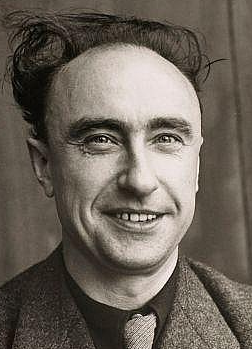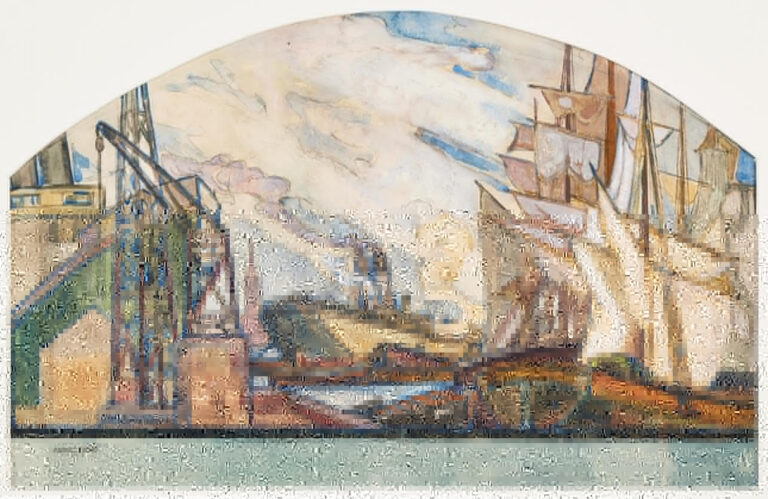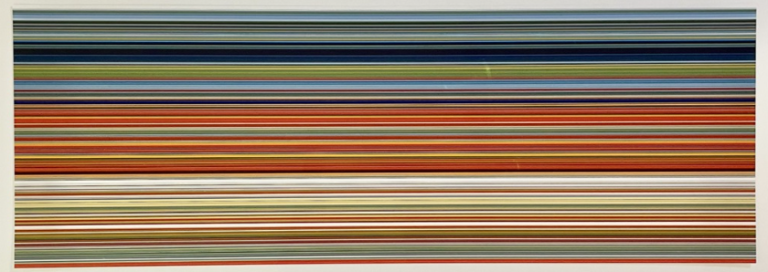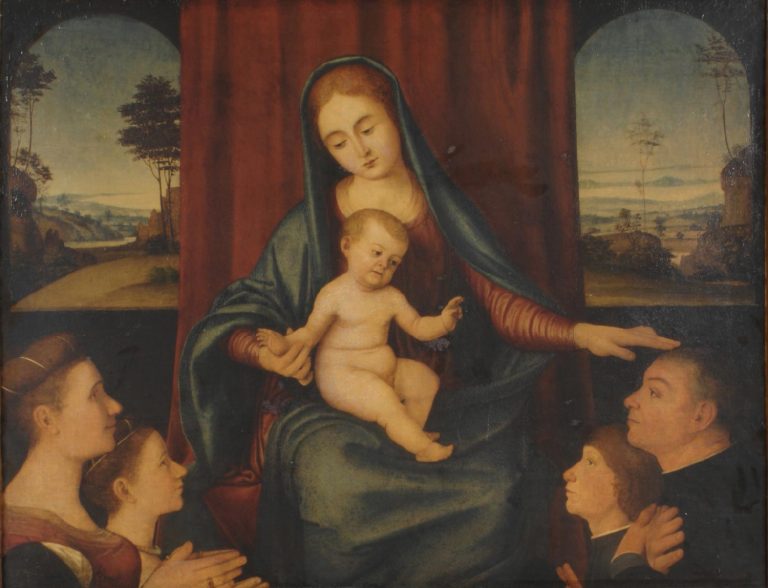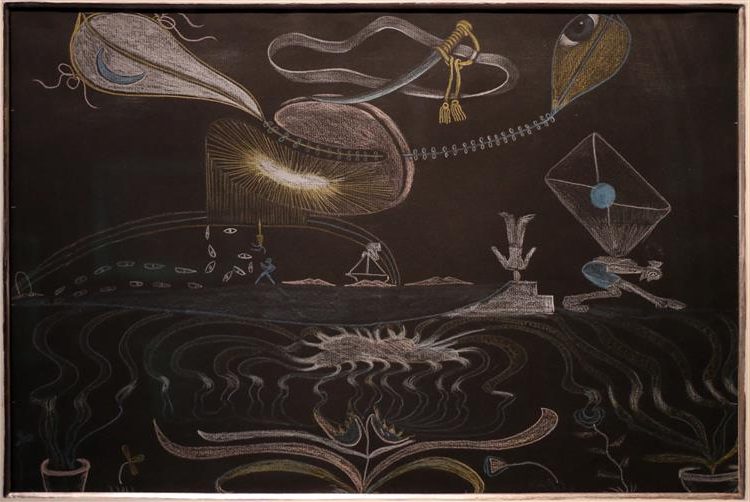Yves Tanguy Painter: The Surrealist Master of Dreamlike Landscapes
Born: January 5, 1900, Paris, France
Death: January 15, 1955, Woodbury, Connecticut, U.S.
Art Movement: Surrealism
Nationality: French and American
Influenced By: Giorgio de Chirico
Institution: Self-Taught
Yves Tanguy Painter: The Surrealist Master of Dreamlike Landscapes
Early Life and Influences
Yves Tanguy’s journey from a sailor to one of surrealism’s most distinctive artists was shaped by his early experiences in France and his unexpected encounters with avant-garde art.
His unique style emerged from a combination of personal background, chance meetings, and the vibrant cultural atmosphere of 1920s Paris.
From Merchant Navy to Bohemian Paris
Born on January 5, 1900, in Paris, France, Yves Tanguy grew up with deep connections to Brittany, particularly the coastal region of Finistère. His father was a retired sea captain, which likely influenced his early career choice.
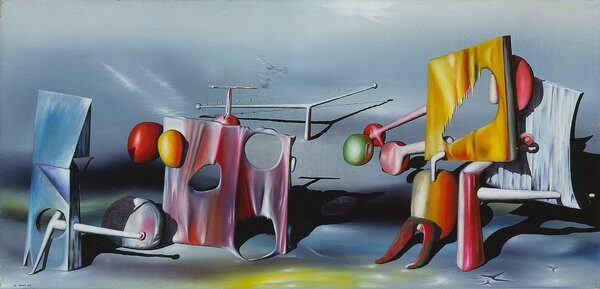
Reply to Red (1943) by Yves Tanguy
After serving briefly during World War I, Tanguy joined the Merchant Navy.
This seafaring period exposed him to diverse landscapes and horizons that would later influence his artistic vision. The vast ocean expanses and mysterious underwater worlds became recurring themes in his later paintings.
In 1922, Tanguy abandoned naval life and returned to Paris. He embraced the bohemian lifestyle of Montparnasse, living without formal artistic training or clear direction initially.
This period of exploration and freedom proved crucial to his development.
Encounters with Surrealism
Tanguy’s artistic awakening came suddenly in 1923 when he saw paintings by Giorgio de Chirico in a gallery window. This chance encounter profoundly impacted him, prompting an immediate decision to become a painter despite having no formal training.
His friendship with poet Jacques Prévert introduced him to Parisian intellectual circles. By 1925, Tanguy had joined the Surrealist movement officially, finding in surrealism a perfect match for his imagination and sensibilities.
André Breton, the founder of Surrealism, quickly recognized Tanguy’s talent and became one of his strongest supporters. Tanguy embraced the surrealist techniques of automatism and dream exploration, developing a distinctive visual language.
Influential Figures and Artistic Foundations
Though self-taught, Tanguy quickly absorbed artistic influences around him. De Chirico’s mysterious landscapes with their dreamlike quality provided an early template for Tanguy’s own otherworldly scenes.

The Ribbon of Extremes (1932) by Yves Tanguy
The Surrealist movement’s emphasis on the unconscious perfectly aligned with Tanguy’s introspective nature. His Breton origins also played an important role in his art. The rocky coastlines and misty landscapes of Brittany seemed to manifest in his dreamlike paintings as stone-like forms and hazy horizons.
Max Ernst, Joan Miró, and Salvador Dalí became both colleagues and influences as Tanguy developed his style. Despite these connections, Tanguy maintained a unique approach that set him apart from other Surrealists, creating imaginary landscapes populated with biomorphic forms that seemed both familiar and alien.
Artistic Career and Development
Yves Tanguy’s journey as a Surrealist painter spans three decades of artistic evolution. Without formal training, he developed a distinctive visual language that made him one of Surrealism’s most recognizable figures.
Unique Painting Style and Technique
Tanguy developed a highly recognizable painting style characterized by dreamlike landscapes filled with biomorphic forms. His technique involved smooth, meticulous brushwork that created an almost photographic quality to his surreal visions.

Multiplication of the Arcs (1954) by Yves Tanguy
He typically used a muted color palette dominated by blues, grays, and browns, with occasional contrasting color accents that created focal points within his compositions. The precision of his technique gave his amorphous shapes a paradoxical solidity.
Unlike other Surrealists who relied heavily on figurative elements, Tanguy leaned toward nonrepresentational Surrealism. His paintings feature strange organic forms that appear to be simultaneously mineral, vegetable, and skeletal in nature.
Tanguy employed automatism, the Surrealist practice of creating art without conscious control, allowing his subconscious to dictate the forms that emerged on his canvas. This approach produced otherworldly landscapes that seem to exist between reality and dreams.
Major Works and Iconic Themes
“Indefinite Divisibility” (1942) represents one of Tanguy’s masterpieces, showcasing his ability to create vast, mysterious spaces populated by ambiguous shapes. The work demonstrates his mature style with its precisely rendered abstract forms against an infinite horizon.
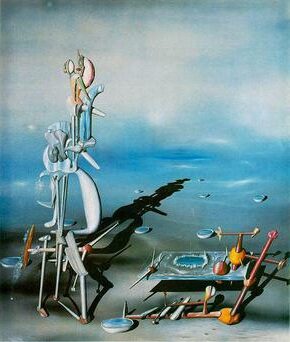
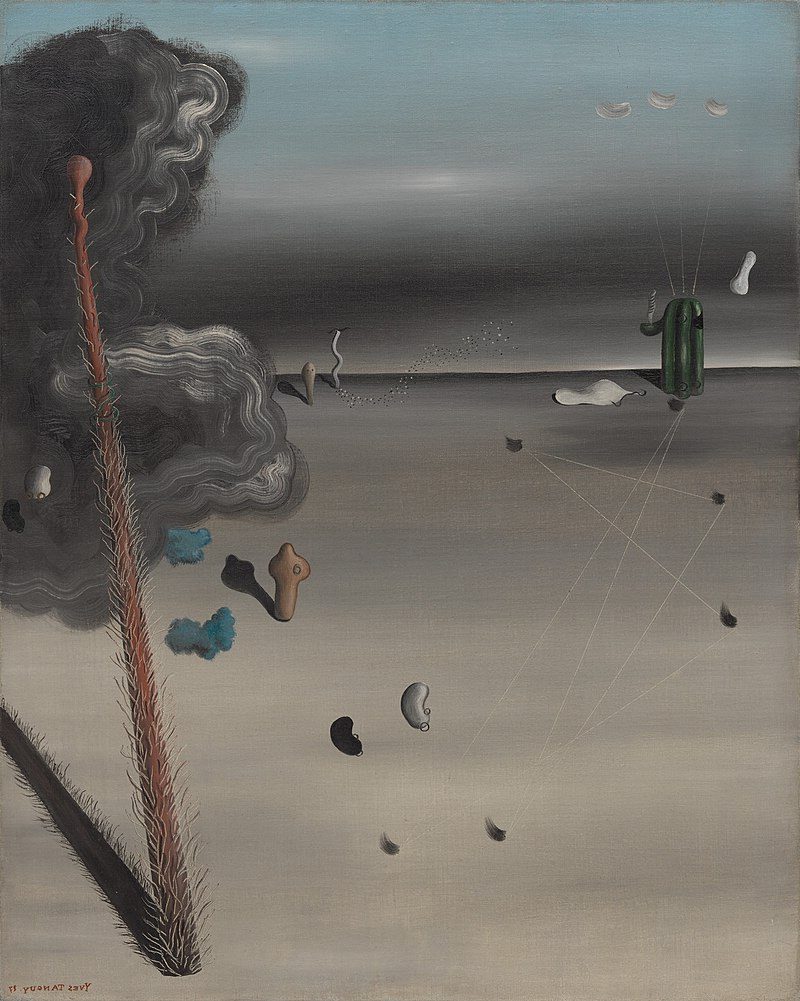
“The Sun in Its Jewel Case” (1937) exemplifies Tanguy’s exploration of cosmic themes and infinite spaces. The painting features strange skeletal structures against a barren landscape, creating a sense of otherworldly desolation.
Tanguy’s works consistently explored themes of the unconscious mind, presenting surreal landscapes that appear to be excavations of the psyche. These mental landscapes were devoid of human figures but filled with enigmatic objects.
His compositions typically featured a low horizon line with strange structures rising from barren plains, creating a sense of vast, endless space. This compositional approach became his signature and influenced many later Surrealist and abstract artists.
Collaborations and Influences
Tanguy joined the Surrealist group in 1925 after being deeply moved by a painting by Giorgio de Chirico. He became a devoted adherent to Surrealist principles as outlined in André Breton’s Surrealist Manifesto.
He worked alongside notable Surrealist artists including Salvador Dalí, Max Ernst, and Joan Miró. While maintaining his distinctive style, Tanguy participated in the collaborative environment that defined the Surrealist movement.
The fantastical worlds of Hieronymus Bosch and the precise technique of Paulo Uccello influenced Tanguy’s approach to painting. These historical references helped shape his unique visual language.
Though primarily a painter, Tanguy occasionally collaborated on Surrealist publications and exhibitions that combined visual art with poetry and other media. These collaborations reinforced the movement’s interdisciplinary nature.
Recognition and Exhibitions
Tanguy’s first solo exhibition was held at the Galerie Surréaliste in Paris in 1927, establishing him as a significant figure in the movement. His work received critical attention for its distinctive approach to Surrealist imagery.
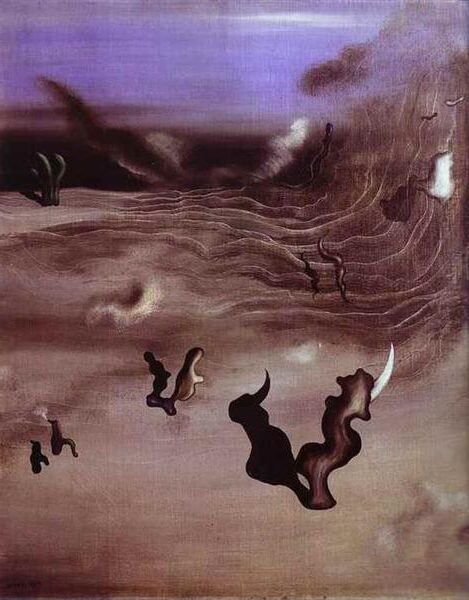
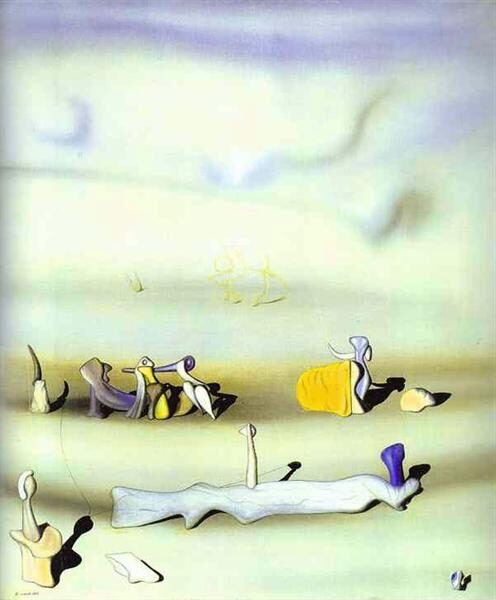
In 1939, Peggy Guggenheim featured Tanguy’s work at her London gallery, Guggenheim Jeune. This exhibition helped introduce his paintings to an international audience and solidified his reputation beyond France.
After moving to the United States in 1939, Tanguy continued exhibiting his work in prestigious galleries and museums. The Museum of Modern Art in New York and other major institutions recognized his contributions to Surrealism.
By the 1940s, Tanguy had achieved significant recognition in the art world, with collectors and museums acquiring his paintings. His unique style made him instantly identifiable among the diverse approaches within Surrealism.
Later Works and Legacy
In his later years, Tanguy continued to refine his distinctive style rather than dramatically changing direction. His mature works show greater complexity and technical mastery while maintaining his characteristic imagery.
After settling in Connecticut with fellow Surrealist painter Kay Sage, Tanguy produced some of his most accomplished works. The American landscape subtly influenced his paintings, though they remained firmly rooted in his surreal visual language.
Tanguy’s death in 1955 cut short a remarkable career, but his influence continued to grow. His unique approach to abstract landscapes and biomorphic forms influenced generations of artists exploring the boundaries between abstract and surreal imagery.
Today, Tanguy’s works are held in major museum collections worldwide, including the Museum of Modern Art in New York and the Centre Pompidou in Paris. His contribution to Surrealism remains distinctive for its consistent exploration of dreamlike landscapes and mysterious forms.
Personal Life and Associations
Yves Tanguy’s personal relationships and social connections significantly influenced his artistic development. His interactions with fellow Surrealists, his marriage to painter Kay Sage, and his relocation to America during World War II all shaped his unique dreamlike aesthetic.
Relationships and Collaborators
Tanguy’s social circle included many prominent Surrealists who impacted his work. He maintained close friendships with Roberto Matta, Wolfgang Paalen, and Esteban Francés, often exchanging ideas about the unconscious mind and dream imagery. These relationships helped refine his distinctive style.


In 1940, Tanguy married American painter Kay Sage, forming both a romantic and artistic partnership. Their relationship was characterized by mutual respect and creative influence, though they maintained separate studios and individual artistic identities.
Tanguy also collaborated with sculptor Isamu Noguchi and photographer David Hare on various projects. These partnerships expanded his artistic vocabulary beyond painting into experimental mixed-media works.
Relocation and American Influence
Tanguy fled France during World War II, settling in Woodbury, Connecticut in 1939. This move proved transformative for his career and personal life. In 1948, he became a naturalized American citizen, fully embracing his adopted homeland.
The American landscape, particularly Connecticut’s rolling hills, subtly influenced his dreamlike terrains. His work began incorporating more expansive horizons after his relocation.
In America, Tanguy connected with emerging Abstract Expressionists like Mark Rothko, creating an interesting bridge between Surrealism and America’s developing art movements. His technical precision and otherworldly imagery impressed American contemporaries, including Richard Powers.
Philosophical and Psychological Interplay
Tanguy’s personal interest in psychology, particularly Carl Jung’s theories of the collective unconscious, deeply informed his artistic vision. He explored psychological ambiguity through dreamscapes that defied rational interpretation.
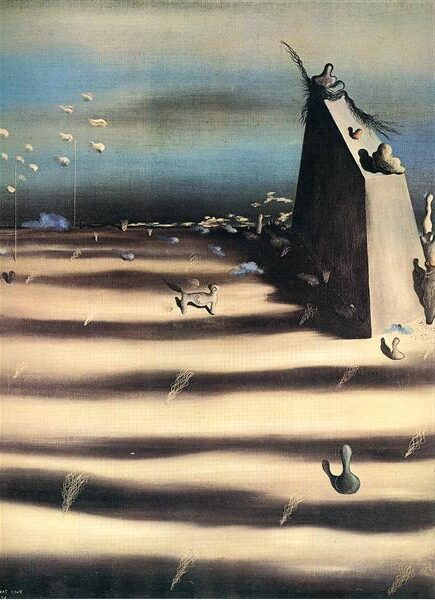
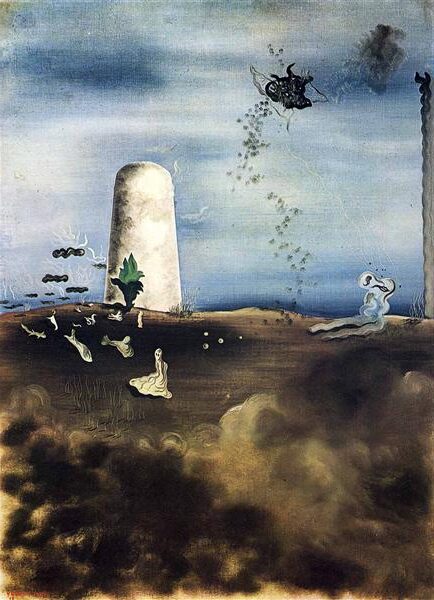
His marriage to Kay Sage reinforced these psychological explorations, as both artists created hyper-real worlds that examined the boundaries between consciousness and unconsciousness.
Tanguy’s paintings eventually caught the attention of psychiatric textbooks, which used his works to illustrate concepts about dream states and the unconscious mind. This recognition validated his lifelong artistic pursuit of visualizing the internal landscape.
His distinctive style later influenced French animated films, particularly “Le Roi et l’Oiseau,” demonstrating how his personal artistic vision extended beyond the canvas into broader cultural expressions.
Frequently Asked Questions
Yves Tanguy’s life and artistic contributions generate many questions among art enthusiasts and scholars. His unique approach to surrealism and personal journey offer valuable insights into 20th century art history.
What are the defining characteristics of Yves Tanguy’s surrealist painting style?
Tanguy’s paintings feature dreamlike landscapes with smooth, biomorphic forms that seem to float in undefined spaces. His work typically includes a low horizon line that creates vast, otherworldly environments.
The artist used a limited color palette, often dominated by blues and grays that evoke an alien, sometimes underwater atmosphere. This distinctive color scheme became one of his recognizable trademarks.
Tanguy painted with meticulous precision, creating highly detailed forms that cast shadows, giving his imaginary objects a paradoxical sense of reality despite their impossible nature.
How did Yves Tanguy’s early life and background influence his work as an artist?
Tanguy grew up in a naval officer’s family from Brittany. The coastal landscapes of Brittany, with their rocky shores and misty horizons, likely influenced his later artistic landscapes.
Tanguy served in the merchant marine before becoming an artist, and his exposure to vast ocean horizons appears in his paintings’ spatial compositions. His lack of formal artistic training allowed him to develop a highly unique visual style untethered from academic conventions.
The artist’s discovery of Giorgio de Chirico’s work in 1923 profoundly impacted his decision to pursue painting, demonstrating how chance encounters shaped his artistic path.
Which major art movements was Tanguy associated with throughout his career?
Tanguy is primarily identified with Surrealism, joining the movement officially in 1925 after meeting André Breton. He remained one of the movement’s most devoted and consistent members throughout his life.
Unlike some contemporaries who explored different styles, Tanguy maintained his surrealist approach even after moving to America during World War II. This consistency made him an important anchor within the movement.
His work bridges automatic drawing techniques with meticulous precision painting, representing key approaches within the broader surrealist movement.
What impact did Yves Tanguy have on the development of surrealism?
Tanguy helped establish the visual language of surrealism through his consistent exploration of biomorphic forms and dreamlike landscapes. His work exemplified the movement’s goal of accessing unconscious imagery.
His technical precision demonstrated that surrealist concepts could be executed with masterful painting skills, contradicting criticisms that the movement lacked craftsmanship.
Tanguy’s move to America in 1939 helped spread surrealist ideas to the United States, influencing American abstract expressionism and later generations of artists exploring dreamlike imagery.
Can you detail the collaboration between Yves Tanguy and other prominent surrealists of his time?
Tanguy maintained a close relationship with André Breton, the founder of surrealism, who championed his work. This connection helped establish Tanguy’s central position within the movement.
He participated in key surrealist exhibitions and publications, contributing to the collective identity of the group. His work appeared alongside artists like Max Ernst, Salvador Dalí, and Joan Miró.
After moving to America, Tanguy remained connected to fellow expatriate surrealists including Marcel Duchamp and Max Ernst, participating in exhibitions that introduced surrealism to American audiences.
What are some of Tanguy’s most iconic works, and what themes do they typically explore?
“Mama, Papa is Wounded!” (1927) represents Tanguy’s early surrealist style. The painting explores themes of psychological trauma and the unconscious mind. Despite its abstract appearance, the title suggests narrative meaning.
“Indefinite Divisibility” (1942) showcases his mature style. In this work, mysterious stone-like forms are arranged in a barren landscape. This work explores concepts of infinity and the strange geometry of dream spaces.
“The Ribbon of Extremes” (1932) demonstrates Tanguy’s interest in creating tension between recognizable and unidentifiable forms. His works consistently examine psychological landscapes rather than physical ones.


